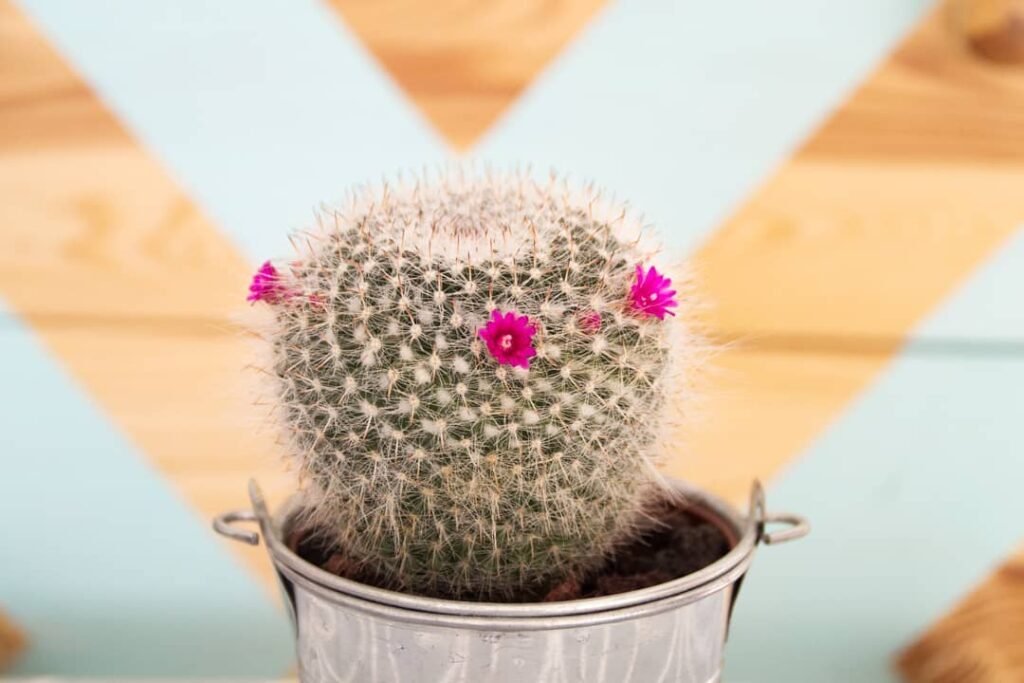Have you ever heard of the Old Lady Cactus, more formally known as Mammillaria hahniana? It’s a plant that’s cherished in its homeland of Mexico and is now winning hearts across the UK. This endearing cactus has sparked a surge of interest among British gardening enthusiasts, keen to learn the secrets of its care and cultivation for their own homes.
So, if you’re intrigued by the old lady of Mexico and want to know how to care for Mammillaria hahniana in the UK, you’re in the right place! In this article, I will guide you through the essential steps of providing the right light, water, fertilizing, soil, pruning, propagation, and repotting conditions to ensure the health and vitality of your Old Lady Cactus.
Appearance of Mammillaria hahniana (Old Lady Cactus)
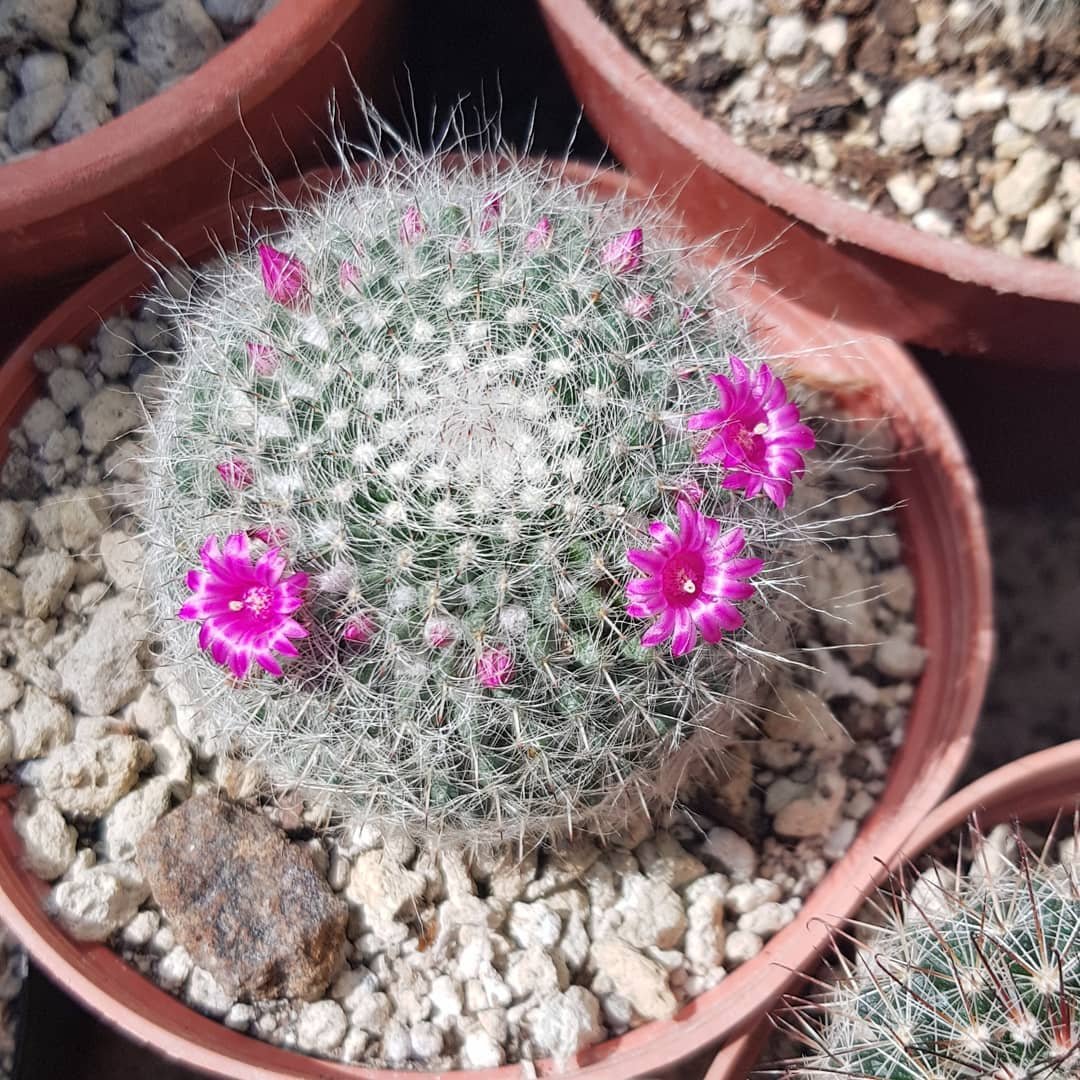

Mammillaria hahniana, also known as the Old Lady Cactus, is a delightful species characterized by its unique appearance. The globe-shaped stems of this cactus are adorned with fine white spines and a soft white down, giving it a charming and elegant look. When grown in clusters, it forms a lovely pincushion-like arrangement. One of the most enchanting features of this cactus is its pretty pink flowers that bloom in spring, adding a touch of colour to its already captivating appearance. Whether placed indoors or outdoors, the Mammillaria hahniana is a striking addition to any cactus collection.
 Did you know the Old Lady Cactus (Mammillaria hahniana) can delight with vibrant pink blooms in late winter to early spring? A treat for indoor gardeners during the colder months!
Did you know the Old Lady Cactus (Mammillaria hahniana) can delight with vibrant pink blooms in late winter to early spring? A treat for indoor gardeners during the colder months!
Light Requirements for Mammillaria hahniana

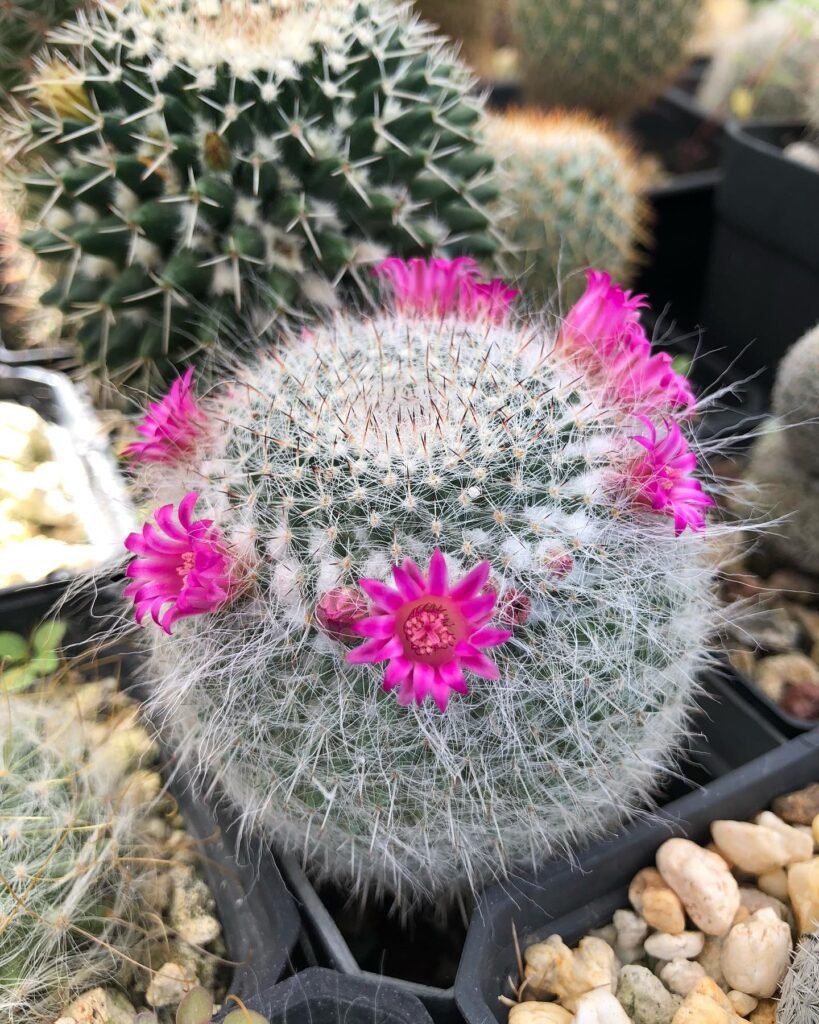
Mammillaria hahniana, affectionately called the Old Lady Cactus, absolutely loves basking in full sunlight. For its well-being and robust growth, positioning it by a south-facing or west-facing window is key, especially in the UK, where maximising light is crucial. This cactus relishes bright light, which is vital for encouraging its stunning, vibrant bloom and maintaining its gorgeous appearance. To prevent any potential for sunburn during the peak summer months, a bit of afternoon shade or using a sheer curtain to filter the strongest rays can be beneficial. This careful balance of light conditions will ensure your Old Lady Cactus flourishes, showcasing its beauty to the fullest.

Watering Tips for Mammillaria hahniana (Old Lady Cactus)


As a desert cactus, Mammillaria hahniana, or the Old Lady Cactus, has specific watering needs that should be followed to ensure its health and vitality.
Firstly, it is important to note that Mammillaria hahniana does not require frequent watering. Overwatering can be detrimental to this cactus, so a cautious approach is necessary.
During the growing season, which is from mid-spring to summer, it is recommended to water the Old Lady Cactus sparingly. Allow the soil to completely dry out between waterings. This mimics the natural conditions of its desert habitat.
When watering, it is best to use a watering can with a narrow spout or a small drip irrigation system to avoid excessive water reaching the roots. This will help prevent the risk of root rot.
Remember, the goal is to provide enough water to keep the plant hydrated without saturating the soil. It is better to underwater than overwater the Mammillaria hahniana.
- Water sparingly from mid-spring to summer
- Allow the soil to dry out completely between waterings
- Use a narrow-spouted watering can or a small drip irrigation system
- Avoid overwatering and risking root rot

Fertilizing and Soil for Mammillaria hahniana
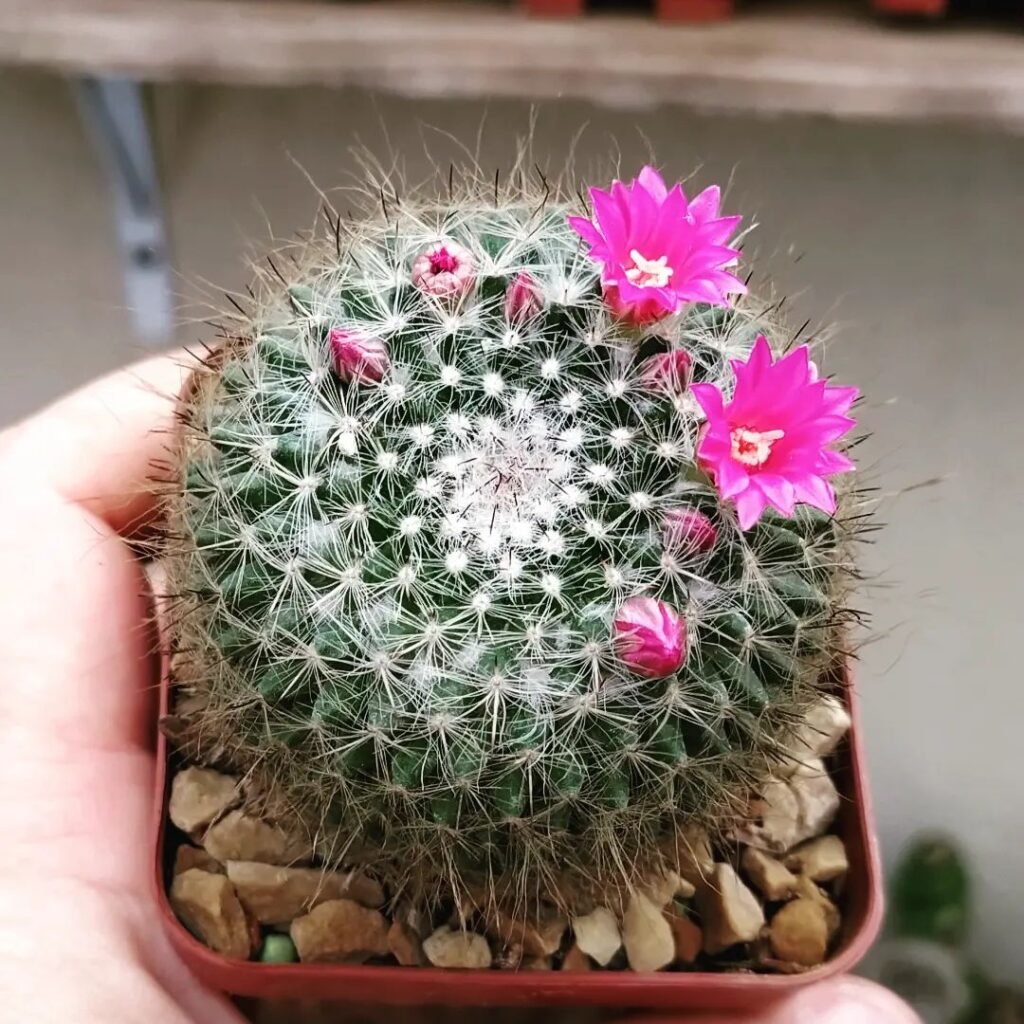
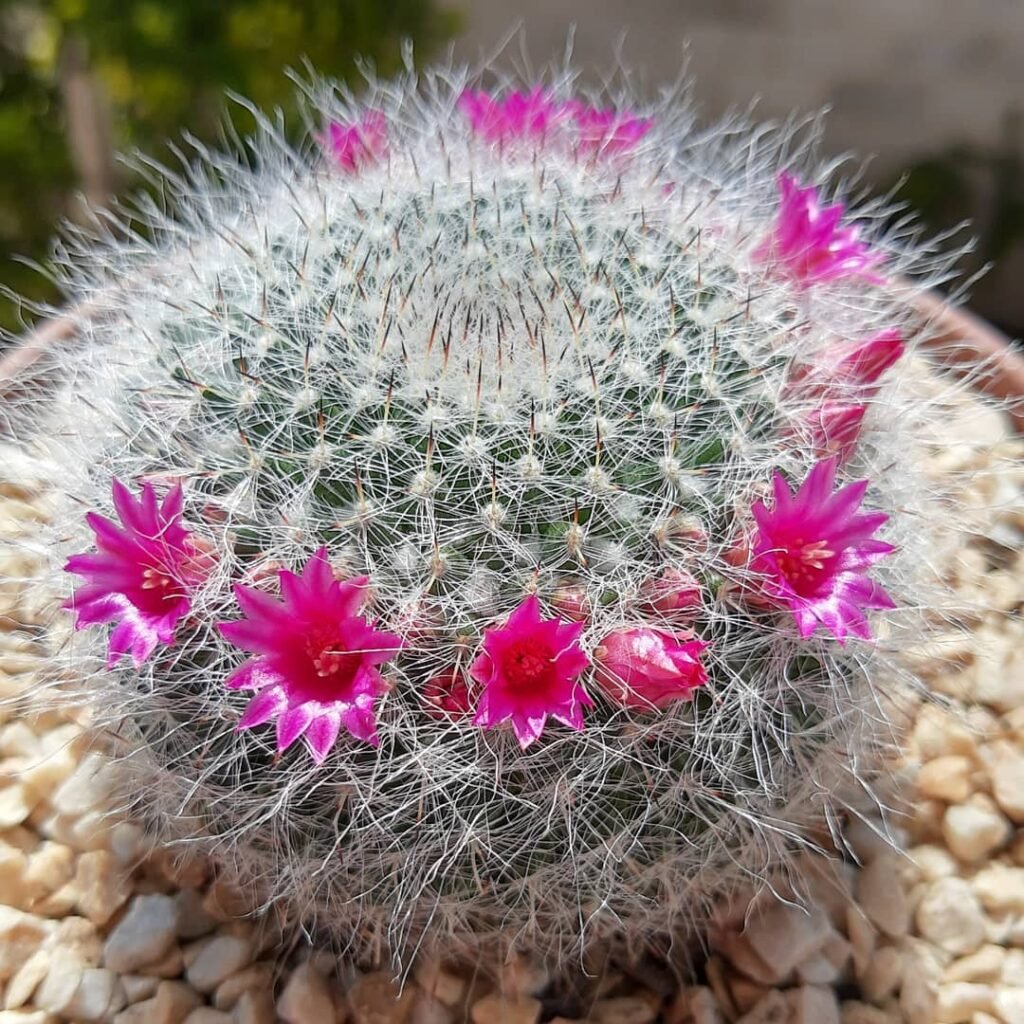
When it comes to fertilizing Mammillaria hahniana, I find that a monthly dose of cactus fertilizer during the growing season works wonders. This special formula is designed to provide the right nutrients and support healthy growth for this unique Old Lady Cactus.
Now, let’s move on to the soil. Mammillaria hahniana prefers a well-drained and light soil composition. Opt for sandy soil to prevent waterlogging and avoid root rot, as these conditions can be detrimental to the health of your plant. You’ll want to ensure that excess water can easily drain away, allowing the roots to thrive.
If you want to take your soil quality to the next level, consider using a cactus compost specifically formulated for succulents like Mammillaria hahniana. This type of compost is enriched with the necessary nutrients and provides the ideal growing medium for your Old Lady Cactus.
Fertilizing and Soil Maintenance Tips:
- Apply cactus fertilizer once a month during the growing season.
- Choose well-drained and light soil, preferably sandy.
- Avoid waterlogging and root rot by ensuring proper drainage.
- Consider using a cactus compost specifically formulated for succulents.

Pruning and Maintenance for Old Lady Cactus

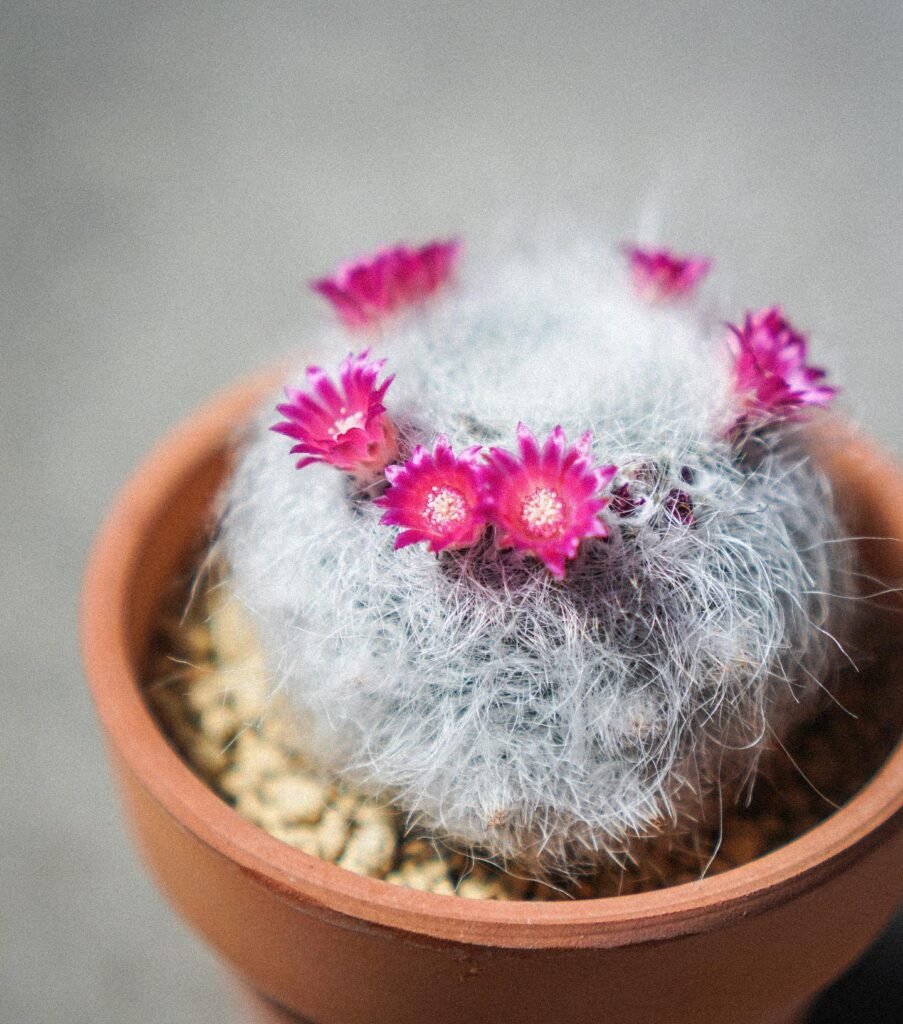
Keeping your Mammillaria hahniana, also known as the Old Lady Cactus, in good health requires regular pruning and maintenance. Although this cactus typically doesn’t require much pruning, it’s important to remove any damaged or dead parts to maintain its overall appearance and promote new growth.
If you notice any damaged or dead stems or branches, gently remove them using sterilized pruning tools. This helps prevent further damage and allows the plant to focus its energy on healthy growth.
Regular maintenance is essential to ensure the optimal health of your Mammillaria hahniana. Here are a few maintenance tips to keep in mind:
- Check for pests: Inspect your Old Lady Cactus regularly for common pests like mealybugs or spider mites. If you spot any signs of infestation, such as webs or tiny insects, take appropriate measures to control the pests and protect your plant.
- Ensure proper air circulation: Good airflow is crucial for the health of your Old Lady Cactus. Avoid placing it in a tightly enclosed area, as this can lead to stagnant air and increase the risk of fungal diseases. If you notice poor air circulation, consider moving the plant to a more suitable location.
- Provide a suitable environment: Mammillaria hahniana thrives in a warm and dry environment. Ensure it is placed in an area with moderate temperatures, away from drafts and extreme temperature fluctuations. Additionally, avoid overwatering or exposing the plant to excessive moisture, as this can lead to root rot.

Propagating Mammillaria hahniana (Old Lady Cactus)
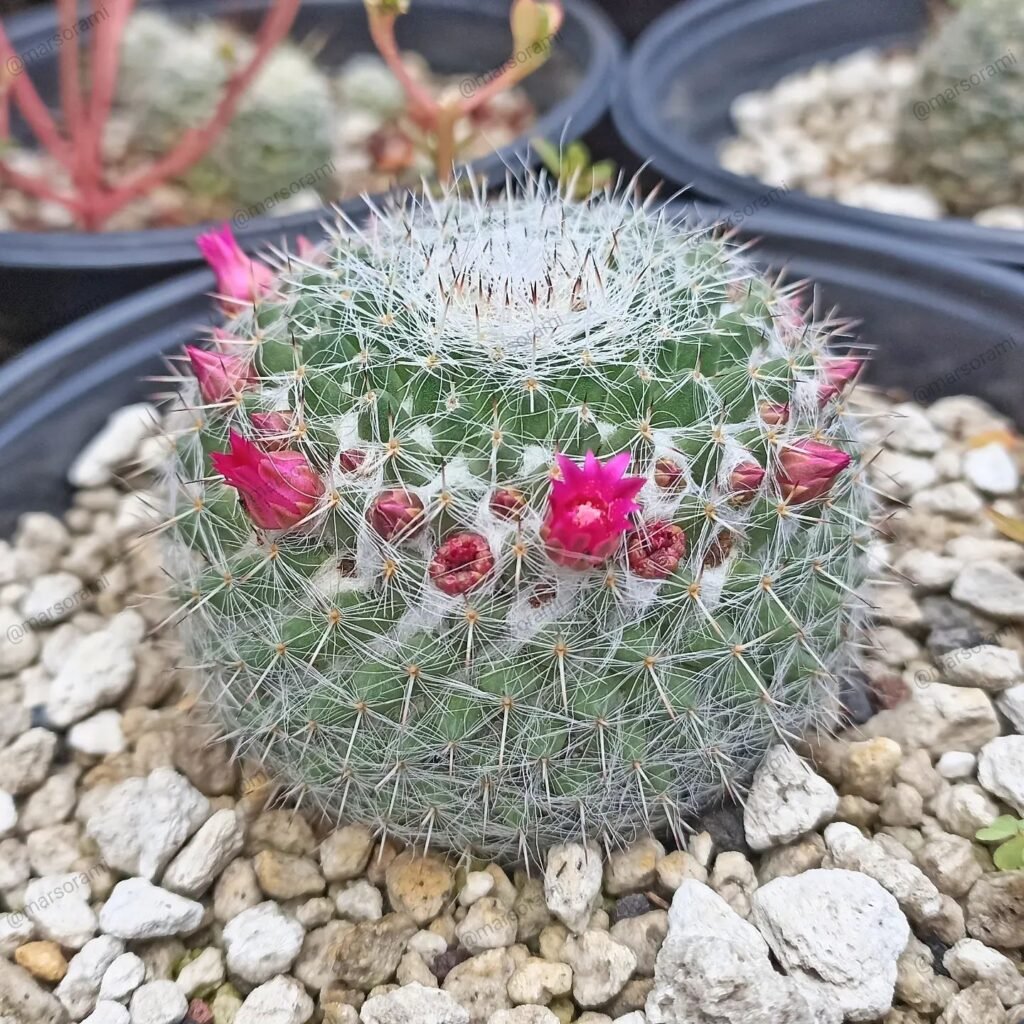
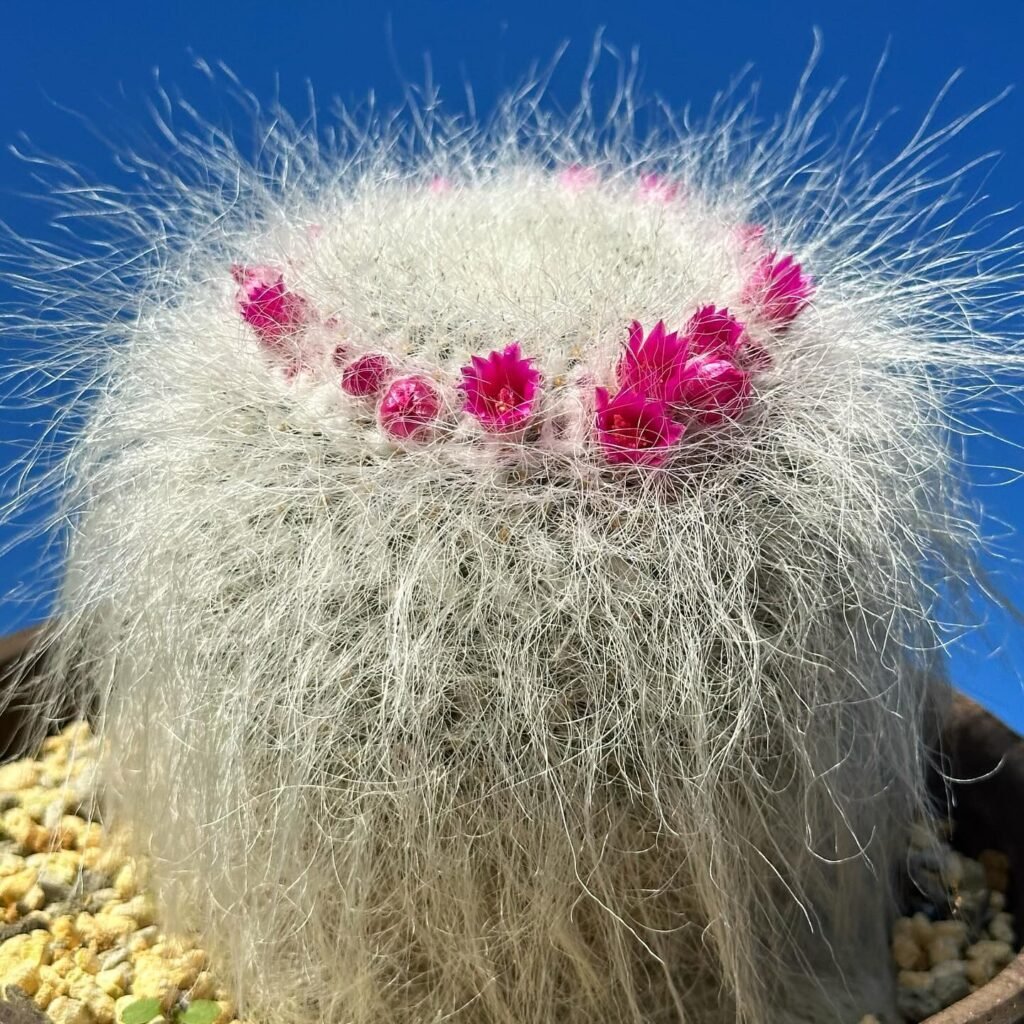
Mammillaria hahniana, also known as the Old Lady Cactus, can be propagated through different methods, making it easy to expand your collection or share with fellow plant enthusiasts. Here are two effective propagation techniques:
- Seed Sowing: Propagating Mammillaria hahniana from seeds provides a rewarding experience. Start by obtaining fresh seeds either from a reputable seller or by collecting them from a mature plant. Sow the seeds in well-draining soil, preferably a cactus-specific mix. Keep the soil consistently moist and place the pots in a warm and bright location, such as a sunny windowsill. With patience, the seeds will germinate, and you’ll soon have new Old Lady Cactus seedlings.
- Offshoot Division: Another great way to propagate Mammillaria hahniana is by separating offshoots, also known as pups, from the parent plant. These small offsets will grow alongside the main plant and can be carefully removed using clean and sharp scissors or a knife. Ensure that each pup has its own set of roots and plant it in a well-draining potting mix. Provide adequate sunlight and water, and soon these individual pups will grow into independent Old Lady Cactus plants.

Repotting Tips for Mammillaria hahniana
When caring for your Mammillaria hahniana, repotting every few years is essential to ensure its continued health and growth. Here are some repotting tips to help you along:
- Timing: Repot your Mammillaria hahniana during the growing season, ideally in the spring or early summer. This allows the plant to recover and establish itself in its new pot before entering a period of dormancy in the winter.
- Choosing the right pot: Select a slightly larger pot with drainage holes. This will provide more space for the roots to grow and prevent waterlogging, which can lead to root rot.
- Preparing the soil: Use well-draining soil mix specifically designed for cacti and succulents. A sandy soil mix with good airflow will prevent water retention and promote healthy root development.
- Removing the old pot: Gently remove the Mammillaria hahniana from its current pot. If the roots are tightly packed, use a blunt object like a pencil or chopstick to loosen them without causing damage.
- Inspecting the roots: Take this opportunity to examine the root system. If you notice any signs of rot or damage, trim away the affected roots with sterilized pruning shears.
- Planting: Place the Mammillaria hahniana in the new pot, ensuring that it sits at the same depth as it did in its previous pot. Fill the remaining space with the prepared soil mix, gently pressing it down around the roots to provide stability.
- Watering: After repotting, refrain from watering your Mammillaria hahniana for a week or two to allow any root damage to heal. Resume regular watering once the plant shows signs of new growth.
 Did you know the Old Lady Cactus gets its name from the dense, white spines that resemble an old lady’s hair, making it one of the most charmingly named succulents?
Did you know the Old Lady Cactus gets its name from the dense, white spines that resemble an old lady’s hair, making it one of the most charmingly named succulents?
Helpful Videos about Mammillaria hahniana (Old Lady Cactus)
Have you had the pleasure of meeting the Old Lady Cactus, also known as Mammillaria hahniana? This delightful cactus, native to the sunny regions of Mexico, has steadily charmed its way into British hearts and homes. Its increasing popularity owes much to its easy care and unique appearance, making it a hit especially with those new to gardening. In my quest to support your green thumb journey, I’ve curated a selection of videos brimming with practical tips and advice. These handpicked guides are just what you need to ensure your Old Lady Cactus not only survives but thrives, offering a splendid starting point for UK enthusiasts eager to delve into the world of gardening.
- How I take care of cactus Mammillaria hahniana
FAQ about Mammillaria hahniana (Old Lady Cactus)

Curious about the best ways to care for your Old Lady Cactus (Mammillaria hahniana)? You’ve found the perfect place! I’ve compiled all the crucial tips to ensure you can look after this charming cactus without a hitch. From getting its light requirements just right to nailing the watering schedule, you’re now well-equipped to see your Old Lady Cactus thrive.
The Old Lady Cactus, or Mammillaria hahniana, also affectionately called the Birthday Cake Cactus due to its ring of pink flowers, is a spherical, spine-covered cactus with white, woolly areoles that resemble an old lady’s hair, hence the name.
Water your Birthday Cake Cactus sparingly. During the growing season (spring to summer), water when the topsoil feels dry. In winter, reduce watering to once a month or less, as the cactus enters dormancy.
Use a well-draining soil mix designed for cacti and succulents. You can make your own by mixing two parts sand or grit with one part standard potting soil to ensure good drainage.
It thrives in bright, indirect sunlight. In the UK, a south-facing windowsill is ideal during summer. In winter, consider using a grow light if natural light is insufficient.
Yes, but it’s best grown in pots that can be brought indoors during the colder months. If left outside, ensure it’s in a sheltered spot that receives ample sunlight and is protected from rain.
Repot every 2-3 years or when it outgrows its pot. Spring is the best time for repotting. Be gentle to avoid damaging the spines and roots.
Mealybugs and spider mites can be a problem. Inspect regularly and treat with an appropriate insecticide or a mild soap solution if pests are detected.
It can be propagated from seeds or offsets. For offsets, allow them to dry for a day after removal, then plant in well-draining soil. Keep moist until they establish.
In cultivation, it typically grows up to 20cm tall and 10cm in diameter, although it can vary depending on conditions.
It flowers in late winter to early spring when given enough light and a period of cooler temperatures in the winter to mimic its natural dormancy period.
It prefers temperatures between 10°C and 25°C. Protect it from frost and bring it indoors before the first frost in autumn.
Yes, it’s well-suited to the relatively low humidity of typical UK homes. Avoid placing it in overly humid areas such as bathrooms.
Ensure it receives enough light and a period of cool rest in the winter, with temperatures around 10°C to 15°C, to encourage spring blooming.
Yes, it is not toxic, but its spines can be sharp. Place it out of reach of children and pets to avoid any accidental pricks.
Use a pair of gardening gloves or fold a thick piece of newspaper into a strip and wrap it around the cactus to move or handle it safely without direct contact with the spines.
I hope this FAQ has provided you with valuable insights on caring for your Old Lady Cactus (Mammillaria hahniana). If you have any more questions, don’t hesitate to leave them in the comments. I’m here to help. Remember, we all start our gardening journey as novices, and there’s always something new to learn as you care for your prickly companion.
Conclusion
Proper care is essential for the health and growth of Mammillaria hahniana, also known as the Old Lady Cactus. By providing the right conditions of light, water, fertilizing, soil, pruning, propagation, and repotting, this charming cactus can thrive and add beauty to both indoor and outdoor spaces in the UK climate.
When it comes to Mammillaria hahniana care, it is important to ensure it receives adequate sunlight. Placing it in a south-facing or west-facing aspect will provide the bright light it needs for healthy growth. Additionally, watering should be done conservatively, allowing the soil to dry out between waterings to prevent overwatering and root rot.
Using a suitable cactus fertilizer and well-draining soil is crucial for the nourishment of Mammillaria hahniana. Regular maintenance, such as checking for pests and ensuring proper air circulation, helps keep the cactus in optimal condition. When it comes to propagation, various methods like seed sowing and offshoot division can be employed to expand your plant collection.
Finally, repotting every few years using well-draining soil and a slightly larger pot provides room for growth and refreshes the soil as needed. By following these care guidelines, Mammillaria hahniana can thrive and bring joy with its unique beauty in the UK climate.

